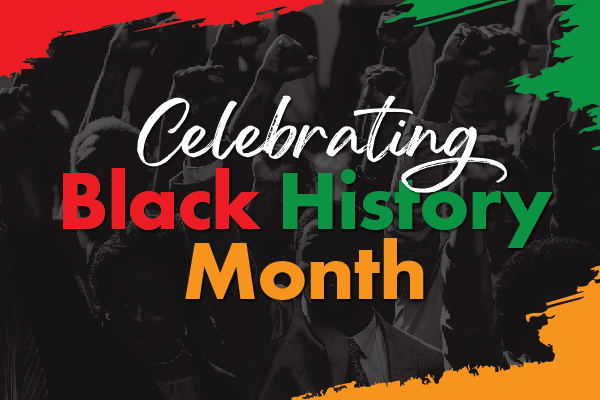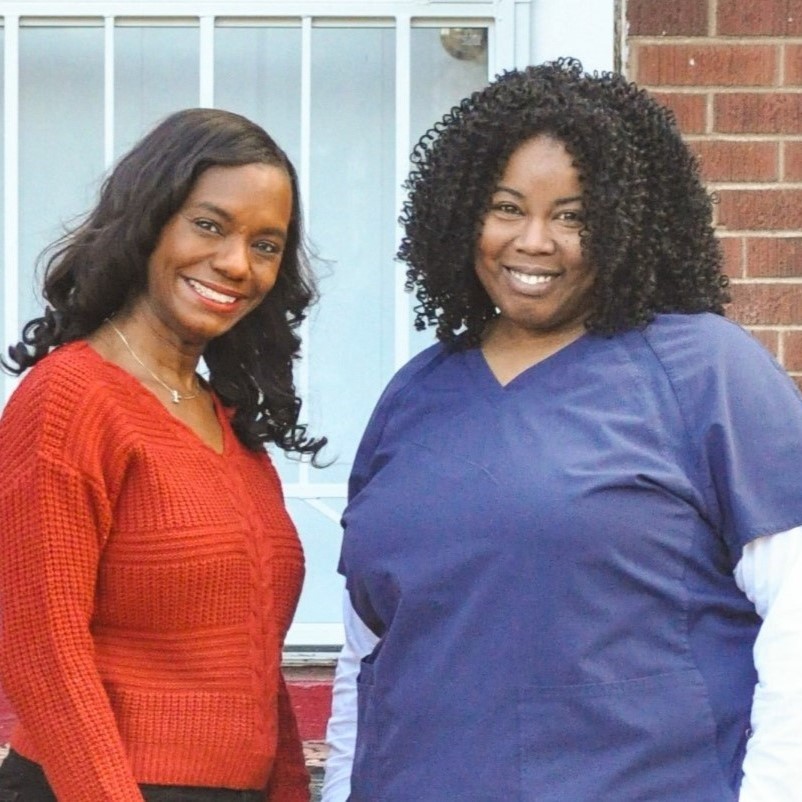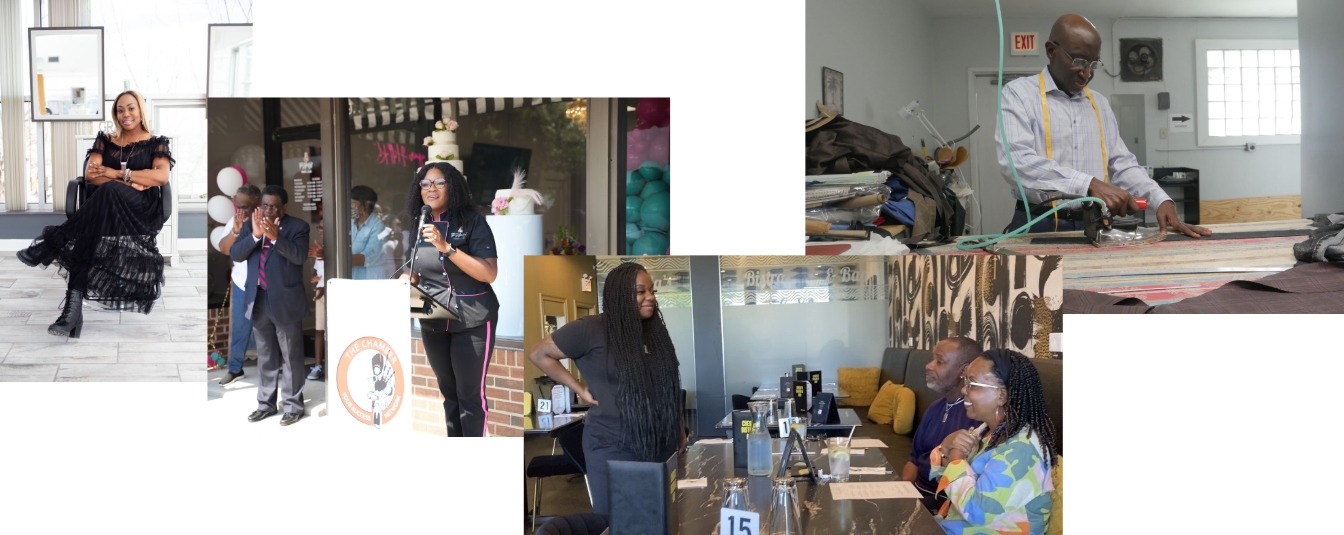
It's February, which means Self-Help is continuing to honor Black History Month by recognizing how we can financially uplift our Black communities. For this blog post, we asked the amazing experts at Self-Help: What is one thing people can do
to support the financial empowerment of Black communities?
Continue reading to learn how each of us can become more conscientious about how we provide support to underserved communities.
Educate
“I would say that we need more financial education in Black communities. Information that folks can easily access and learn right in our communities where we live - churches, schools, barber shops & beauty salons, community recreation centers, etc. Folks want to be educated but they don’t know where to go to get the information. They don’t know what questions to ask, so we can start by providing resources on understanding credit and credit scores, budgeting to create savings, financial planning, and investments. Then, we can offer additional courses geared towards homebuyer education, tax preparation, and starting a business.”
- Shondra Tanner, Self-Help Director of Mortgage Origination
There is a reason why there are so many famous quotes along the lines of “Knowledge is freedom.” When we are empowered with education, we can have a better understanding of how things work, which means we can more easily navigate the systems around us without being unnecessarily burdened by challenges.
According to a report conducted by the TIAA Institute and GFLEC, African American adults answered only 38% of the Personal Finance (P-Fin) Index questions correctly, compared to 55% for white American adults. The
National Urban League (NUL) notes that “The connection between financial literacy and financial wellness is well-documented... Those with higher financial literacy tend to save for retirement, have non-retirement savings, and manage their debt better overall.”
Like Shondra mentioned, having access to education in community-centered locations that people already trust is ideal because it is engaging, especially for people who are new to financial education. If you are able, consider helping
to coordinate a financial education session in a community space that centers on underserved populations. If that’s not doable, you can also leave information or flyers for financial education resources that
you trust in these community spaces with their permission.
Also, keep in mind that many credit unions and Community Development Financial Institutions (CDFIs) offer free financial coaching. At Self-Help, we offer free financial coaching resources to members, including credit score coaching, goal-based financial coaching, and resources through our partners at GreenPath.
This guidance doesn’t just apply to individuals – it applies to Black business owners, too.
“To support the financial empowerment of Black communities, ensure business owners are educated on financial management (ensure that they utilize the best accounting practice for their business structure, as well as understand business acumen) to ensure that they are filing correct and using accurate tax schedules, documents, profits/losses info, etc.”
- Franja Meeks, Self-Help Small Business Coaching Manager | 
Franja Meeks with her financial coaching client, Erica Beal, in Chicago, IL. |
If you are a successful business owner or are in a field where you might understand finance or have other knowledge around running a business, consider offering mentorships to Black business owners. Here are a few resources Franja provided that
you can use or share around that may also provide helpful education to small business owners:
Invest

Images of business owners Self-Help has worked with. Business names (left to right): Amaka's International Hair & Body Spa in Durham, NC; The Sugar Hill Kakery in Laurinburg, NC; CheSa's Bistro and Bar in Chicago, IL; and Creative Design and Tailoring in Chicago, IL.
“By intentionally choosing to shop at Black-owned businesses in your community, you can help promote financial empowerment and create a positive impact. These businesses are often deeply connected to their communities, allowing the money
you spend to circulate locally. This, in turn, contributes to economic growth and job creation within the area.”
- Carl Brown, Self-Help VP of Community Engagement
One of the most effective ways we can financially empower Black communities is by quite literally putting our money into them by purchasing their goods and services. Consistency is key – this is something we can work to actively do throughout
the year (not just in February or on Juneteenth).
“It is now more important than ever to consciously and consistently support Black businesses to ensure that they remain viable and thriving businesses. To support the financial empowerment of Black communities, people can... choose one day
of each month to personally visit and support a Black-owned business by purchasing at least one item a month or... setting up a monthly reoccurring purchase online for a product/item via the business owner’s website.”
- Franja Meeks, Self-Help Small Business Coaching Manager
According to The State of Black Business report by Alliance for Entrepreneurial Equity, Black-owned businesses are often shut out of financing, receive less than 1% of all venture capital investment, and are inadequately represented among government contract awardees.
While much of this is based in historical biases, inequitable distribution of generational wealth, and lack of resources for Black communities, we as consumers can still help shift these patterns. By buying Black-owned, we are putting more Black
business owners in better financial positions and demonstrating that they are part of a community worth investing in. As these businesses grow, they get more and more attention from wider audiences and access to resources and funding to continue
the trajectory of that growth.
If you need help finding Black-owned businesses near you, there are a number of ways to search Black-owned for any products you may need, including through directories like BuyBlack.org.
“Hit up their restaurants, check out their festivals, and visit their grocery stores. Whenever you can, grab their products! If you find Black entrepreneurs with awesome goods or services, let others know! Share your experiences on social
media or wherever you like. We really need to boost positive consumerism for people of color right now but that starts with patronizing the entrepreneurs in those communities.”
- Josh Duncan, Self-Help Supplier Diversity Manager
Once you patronize Black-owned businesses, make sure you are sharing your experiences. Word-of-mouth is still one of the most effective ways for businesses to get new customers, so tell your friends and family or follow businesses you like on
social media and share/repost updates about their products or services.
Don’t Discriminate
“Not every Black-owned product or service is created just for Black-identified people. I worry that sometimes there can be a social stigma attached to Black-owned products and their advertising that just because the producer and faces on
the packaging are melanated, they are the only ones who can use said product. Now, not every product and service is for everybody, of course, but there are many that could benefit from a broader audience reach. So, don't be scared of that
beard oil, or that body wash, or those Pop Tart alternatives, and try out something you may have overlooked.”
- Dr. Quinton Smith, Self-Help VP of the Office of DEI
Because of the nature of how our society in the U.S. has centered itself, products and services made by white people with white people on the packaging are often thought of on a subconscious level as being for everyone or being the default option,
while products with people from any backgrounds different from us on the packaging are often considered to be created specifically for those people. As Dr. Smith mentioned, there are some spaces, opportunities, and services that are meant
to specifically support underrepresented groups that people outside of that group should not try to take advantage of. However, the vast majority of products made by underrepresented people can be enjoyed by anyone and everyone.
Most of us are guilty of some kind of bias that may make us afraid of using products that are not promoted in a mainstream way, but it’s important for us to acknowledge and uncover those biases so that we can actively make different choices.
For instance, it’s common for hair products made by and for Black hair to be placed in their own section of the haircare aisles, away from the mainstream brands. However, these products often contain ingredients that many non-Black people
with curly hair or even non-Black people with straight hair might find extremely beneficial as well. Since these products are in their own section, they often don’t even get considered by people who aren’t specifically seeking
them out.
Next time you go shopping, pay attention to what products you’re reaching for, and maybe try reaching for one that is made by or has someone on the packaging that looks different from you. Not only would you be working to reinvest in underrepresented
smaller businesses and helping to reframe who is considered marketable in the U.S., but you may also find your new favorite product.
Integrate

Images of students in schools supported by Self-Help
"Historically majority Black neighborhoods are in poorer neighborhoods because of both redlining and white flight. Because of this, schools in those neighborhoods often don't receive as much money from the government, making those schools less
attractive to new teachers, harder to retain old teachers, and making the schools operate with less resources....”
- Kiah Glenn, Self-Help Manager of the Office of DEI
School district borders are often drawn in a way that separates students based on economic status through a process called gerrymandering. Because of the historical issues that Kiah mentioned, this practice typically results in racial segregation as well. Since school districts are heavily funded
by property taxes, school districts in low-income neighborhoods have less resources and funding. This impacts educational outcomes, which we already know are tied to financial empowerment.
“...People from well-off neighborhoods who want to have an impact should consider enrolling their kids in these predominantly Black schools. Not only would it increase funds because of the cost to transfer, but if those families financially
are better off, they can provide resources to the class that other parents may not. This makes it easier for teachers to focus on teaching. Those of us with the means should be pumping our support into these public schools because education
is a direct indicator of lifetime financial wellness.”
- Kiah Glenn, Self-Help Manager of the Office of DEI
It’s important that we consider how we can support underfunded schools and integrate more with surrounding communities. In addition to Kiah’s suggestion of considering where you enroll your children (if you have them), here are a couple
other things to consider:
Support local schools – If you don’t have kids or don’t have school choice, consider other ways you can give back to schools near you that may be underfunded. Can you volunteer your time to provide tutoring,
impactful opportunities, or other support? Can you donate supplies or experiences? Reach out to these schools directly and ask them what they might need.
Consider your surrounding communities – Because of historical issues, you may be part of a more segregated district, neighborhood, or community. How are you participating in your community? Are there things you might be able to help
change? Are there areas of town you don’t usually go to? Consider why that is and how you might be able to integrate more within your neighboring communities.
Outsource your extracurriculars – Try enrolling your child (or yourself) in activities that are in parts of town with more people from different backgrounds. Put extra money into those programs, if you are able, to help
purchase supplies like Kiah mentioned or allow people with less means to participate as well.
Learn about housing policies – According to research from the
Poverty & Race Research Council
, there is a reciprocal relationship between housing policies and school segregation. Because this impacts financial wellness for underrepresented communities, Self-Help is working toward making housing more equitable through our
Racial Wealth Gap Initiative
and our policy arm, The Center for Responsible Lending, is working to advocate for
fairer mortgage lending policies
.
It’s important to consider how we are involving ourselves and our families in communities that are different from our own and what other steps we can take that can still make a difference in the financial empowerment of Black communities
starting from school age, when additional support can be most impactful.
When we find ways to educate, invest, and integrate without discrimination, we create more equitable, empathetic, and financially empowered communities. At Self-Help, we are honored to be celebrating our Black communities and finding ways to support
all underrepresented communities year-round. Happy Black History Month!